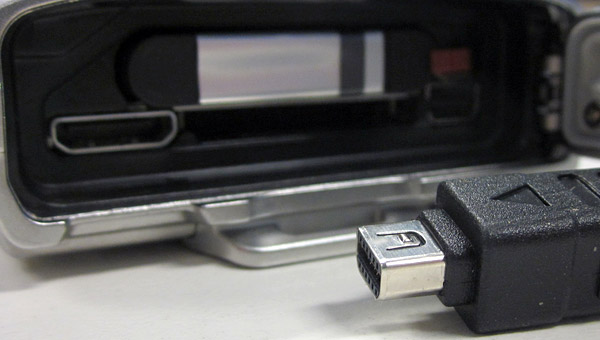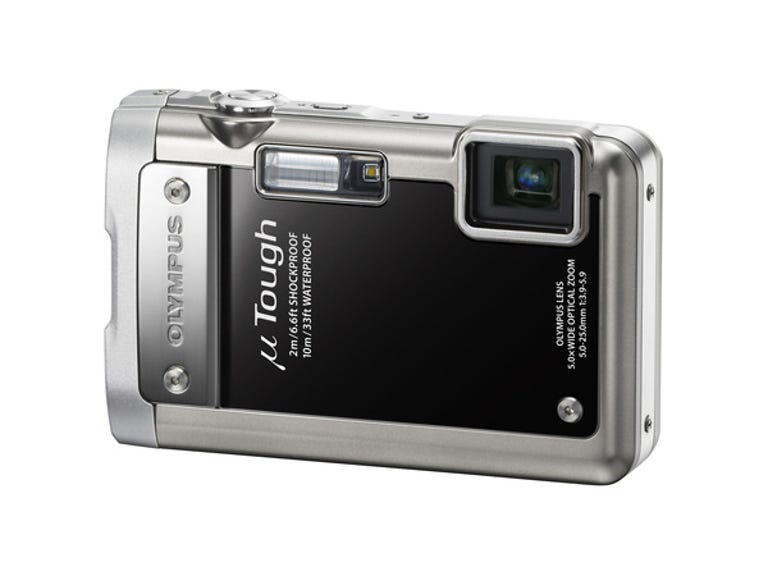 Why You Can Trust CNET
Why You Can Trust CNET Olympus Mju Tough 8010 review: Olympus Mju Tough 8010
The Tough 8010 is the strongest compact that money can buy, and features HD video recording. Still, its slow performance means you will miss critical shots and its image quality is only just OK.
Olympus tough cameras certainly have a heritage of being the biggest, meanest cameras out there when it comes to resisting stuff. Whether that's being thrashed about in the slobbery jaws of a belligerent puppy or in the hands of construction workers, these cameras are marketed as the toughest on the market.
The Good
The Bad
The Bottom Line
The 8010 is the successor to the Tough 8000, a camera that we had no quibbles with in regards to its strength, but its images were less than successful.
Design and features
First impressions for the 8010 relate to its weight and heft; at 215g it's significantly heavier than most compact cameras. Inside sits a 14-megapixel sensor and a number of upgrades from the older 8000 camera, including HD video recording at 720p and 5x optical zoom. The biggest improvement is that the 8010 now uses SD/SDHC cards exclusively rather than the slower xD format.
At its widest, the lens is 28mm and the 8010 is equipped with an image stabiliser. The screen size remains unchanged at 2.7 inches, although the whole back panel has been given a bit of a facelift.
In terms of strength, this camera is rated as crushproof to 100kg and waterproof to 10m. Dropping it from anything up to 2m shouldn't damage the camera and it's also freeze proof to -10 degrees Celsius. Given how heavy this camera feels in the hand, we're glad it is resistant to lots of bumps and scratches. The metal rivets, and the industrial finish, all further the tough credentials of this camera. In this field, the Olympus only really has one direct competitor, and that's the Lumix FT2, which matches the 8010 in most areas apart from crushproofing.
The 8010 comes supplied with a rechargeable Lithium-ion battery, but the charging configuration is a little tricky. As it's a "tough" camera, most critical components are protected in some way from the elements; the lens is covered with a retracting metal flap, and the memory card and battery door can be locked with a metal mechanism and a plastic one. So to get to the battery it's necessary to open the door and stick the charging cable into the side of the camera — there's also the option for USB charging from a computer. There too underneath the flap is an HDMI-out port. On board is 2GB of internal memory, of which, 200MB is taken up for the iB software and user manual. The iB software is supposed to automatically run when the camera is connected to a computer; however, we couldn't get the software to work, or find it anywhere in the file structure of the camera. If you encounter the same issue, the software can be re-downloaded from the Olympus website when you provide the camera's serial number.

The HDMI port, battery, memory card slot, USB interface port and cable are all hidden underneath the double-lockable flap. (Credit: CBSi)
Another new addition we're happy to see is the streamlined new menu system and graphics. As for scene modes, expect the standard program and automatic modes, plus "beauty" mode to smooth skin tones, panorama and magic mode that puts different effects (Pop Art, pinhole, fish-eye and drawing) on the final image.
As with all waterproof cameras, there are stringent guidelines that need to be followed in order to maintain its waterproof features, all of which are documented in a booklet provided in the box. (The instructions can also be found online here.)
Compared to
| Olympus Tough 8010 | Panasonic Lumix FT2 |
|---|---|
| 14 megapixels | 14 megapixels |
| 2.7-inch, 230,000-dot LCD | 2.7-inch, 230,000-dot LCD |
| Waterproof to 10m, crushproof to 100kg, drop proof from 2m, freeze proof to -10 degrees Celsius | Waterproof to 10m, drop proof from 2m, freeze proof to -10 degrees Celsius |
| HD video (720p, MPEG-4) | AVCHD Lite HD video (720p) |
| AU$499 | AU$599 |
Performance
Tough cameras are slow by their nature, and the 8010 definitely confirms this again and again. It takes 4.5 seconds for the camera to start up and take its first shot. Shutter lag is a leisurely 0.9 second in adequate light, which makes this camera less than ideal for critical action-based shots.
Shot-to-shot time is also very slow, averaging out at four seconds when the camera is set on continuous shooting mode. Olympus rates the battery for the 8010 to last up to 240 shots, without video.
Image quality
As with the other Olympus tough cameras, image quality is only just acceptable for a compact. It's difficult to be too critical of its images though, given that the main purpose for buying this camera is to be tough, rugged and to withstand the elements.
Images at low ISO levels appear over-processed at full magnification. At high ISO levels everything looks crunchy and very smeary; ISO 1600 is unusable except for web use at a reduced magnification.
Colours are reasonably accurate, if a little washed out, and as would be expected, underwater images are tinged with a fair amount of blue cast on automatic settings. Images taken indoor with flash are usually washed out or blown out. The art filters (of which there are only four, noticeably missing out on the black-and-white filter) are good, as usual.
Strangely, in Program mode, you can't select the highest quality JPEG processing for a 14-megapixel image — only for 8-megapixel images and below. Even more strange is that in automatic mode, the fine JPEG mode is available, and works.
Video quality is average, with blocky artefacts appearing on fast-moving subjects (see the video below) though the sound is reasonably good from the microphone.
Image samples
Click each image below for JPEGs straight from the Olympus 8010. No post-processing has been done to alter these photos.
Exposure: 1/50, f/5, ISO 160 | Exposure: Pop Art mode, 1/125, f/5.3, ISO 125 |
Exposure: 1/125, f/5.9, ISO 80 | Exposure: 1/125, f/14, ISO 125 |
Conclusion
The Tough 8010 is an improvement on the older Tough 8000 camera, and is the strongest compact that money can buy. Still, its slow performance means you will miss critical action shots so do bear this in mind, and image quality is average.


